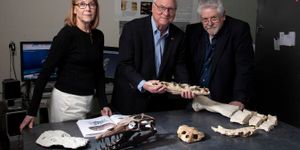Study maps how inhaled plastic particles journey through they body
A team of researchers at the University of Technology Sydney (UTS) recently published a study modeling the effect of tiny plastic particles on the human body, with a particular focus on how these particles move through the body when they are inhaled. The team’s work is published in a recent article published in Environmental Advances.
The presence of nanoparticles of plastic in our food, water, and even in the air has become a pressing concern among public health and environmentalists. It’s only reinforced how reliant we as a society have become on plastic and the consequences of discarding plastic in such a way that it can seep into drinking water and more. The health concerns, in particular, focus on what happens now that we know people have been found with microplastics in their system, with microplastics being found even in placentas of unborn children, underscoring how bad its gotten.
But a key question remains: how do microplastics get into our system, how do they move around the body once in, and where do they go? UTS researchers sought to find answers to these vital questions. Leveraging computational fluid-particle dynamics, researchers examined how different sized particles move through the body, with a particular focus on nanoplastics that are airborne and subsequently inhaled. Its more and more clear that nanoplastics are airborne, and that breathing them in is one of the most common ways plastics get into our system. These particles come from numerous sources, with many outdoor plastics coming from things like plastic particles that come from wastewater.
From their modeling, researchers found that nanoparticles tend to accumulate in certain areas of the body once they are in, including the larynx and the lungs. The team also found that higher breathing rates found larger particles of plastic remaining in the upper respiratory tract, whereas slower breathing rates allowed for deeper penetration of plastics.
Sources: Science Daily; The Guardian








